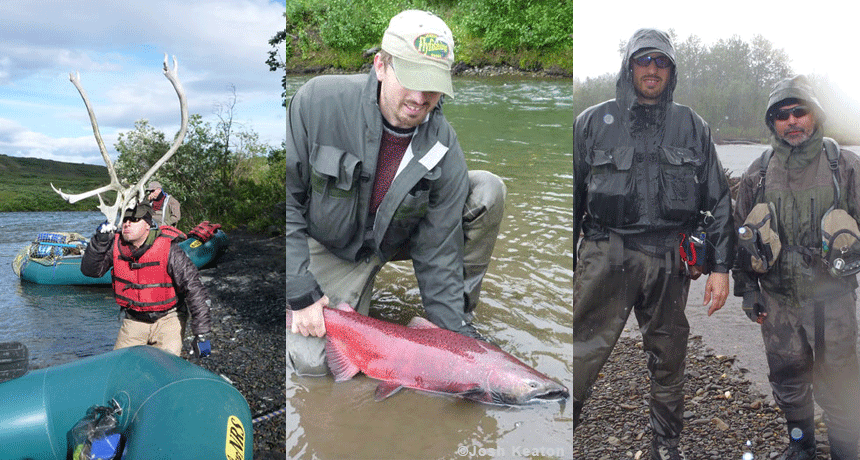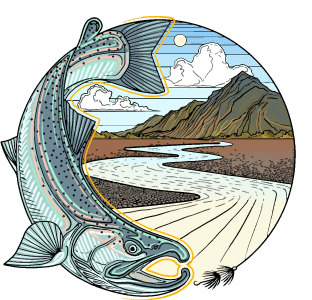
People are faced with information overload due to traveling in an unknown environment and a serious need to relax and avoid rationale decision making (it IS tiring after all). This article will hopefully offer solutions, thereby reducing your dissonance.
Unfortunately brain shutdown can have a profound impact on your fishing decisions both prior to a trip and especially during the trip your dreams. The obvious cure is to book an all-inclusive fishing lodge, but many of us cannot afford the extravagance, are traveling with our family, or prefer a more bohemian pursuit of our finned friends. This is not to say those lodges aren’t great; just to say you don’t need my advice since all you need is to call Alaska Fly Fishing Goods and make a reservation. For the rest of you, I have some very simple advice that I’ve collected during 15 years of working with anglers coming to Alaska. The following list is not comprehensive, but it will at least get you on track to a great fishing experience.
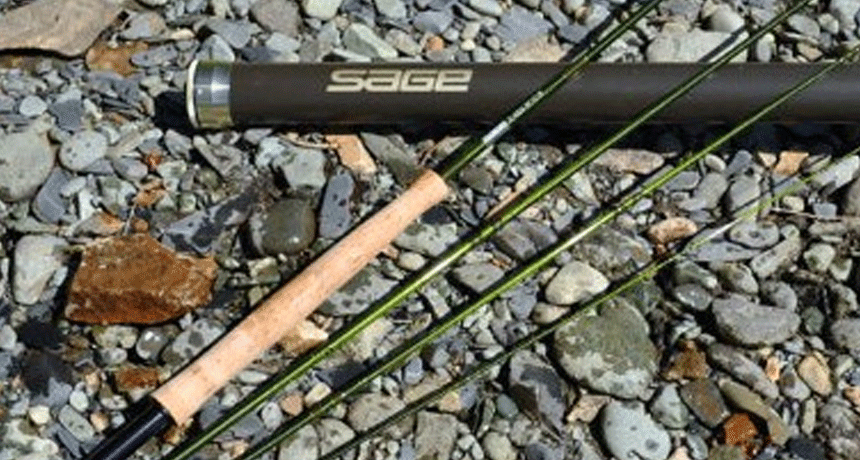
FISHING TIP #1
Plan your trip so it occurs in an area where your dream catch actually occurs. This seems really obvious, but I am always surprised when people get all the way to Alaska and ask to fish a certain species that doesn’t range into the area they have traveled. The disappointment is palpable. Do your research! An excellent source for information on the types of fishing by region is at the Regions section of the webpage.
Close your eyes… imagine spending money for a trip of a lifetime and coming home without catching fish….wow… that sucks, huh? Dissonance at its worse. Of course, your pain is not over yet… Facing the music when you have to tell your buddies that you didn’t catch fish in Alaska is a special gift that continues giving after your trip is over! Predictably their response will be something along the line: “You went fishing in Alaska… how could you NOT catch a fish?” Your response is likely a litany of excuses about the fish being late and/or poor weather. Deep down you know these are lame excuses and you probably feel shame for using them.

Pick the timing of your trip very carefully. Alaska is a state of pulse fisheries: fish are here one day and gone the next. This is particularly true for freshwater systems with salmon. Check the peak salmon runs for the area you are going to fish and talk with local flyshops (See Fishing Tip #8). The link above has information to help you sort out run timing. You can also call a sport fishing biologist at the Alaska Department of Fish and Game for detailed information and even scientific reports.

Photo by Jason Gasper. FISHING TIP #3
Give yourself a weather window. Huge storms that would make national news in the lower 48 regularly roll off the Gulf of Alaska and the Bering Sea during winter, spring, summer, and fall. Bad weather can end a fishing trip by blowing a stream out or cause a flight or boat trip to be cancelled.
There are certainly roadside places you can catch fish. In fact, there are really amazing roadside places such as the Kenai River; however, as an Alaskan who has been all over the state, I can tell you first-hand the best places are accessed by plane. These are special places that will provide you with a taste of wilderness and truly special fishing.
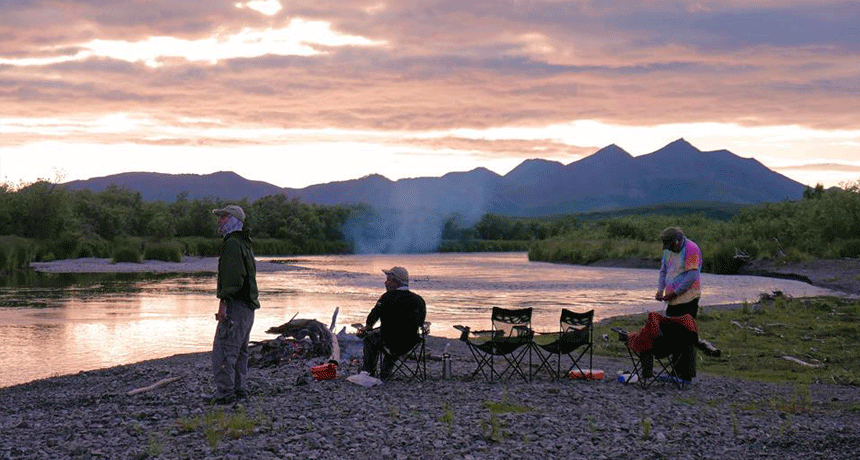
Get in a small plane and off the road system. A huge part of the adventure of fishing in Alaska is the small plane experience and fishing in the wilderness. Planes are spendy, but I am guessing you spent a lot of money coming to Alaska: A few extra dollars for a plane may just buy the most memorable part of your trip. A few ways to reduce the costs are to split the charter with friends or sign onto a guided trip.

If you really cannot afford a remote fishing opportunity via plane, then try and coordinate your trip to go through a smaller Alaskan community that is not connected to the main southcentral Alaska highway system. Many of these communities are accessed by Alaska Air and have outstanding fishing opportunities from their road systems. Some examples include Yakutat, Cordova, Nome, and Juneau.
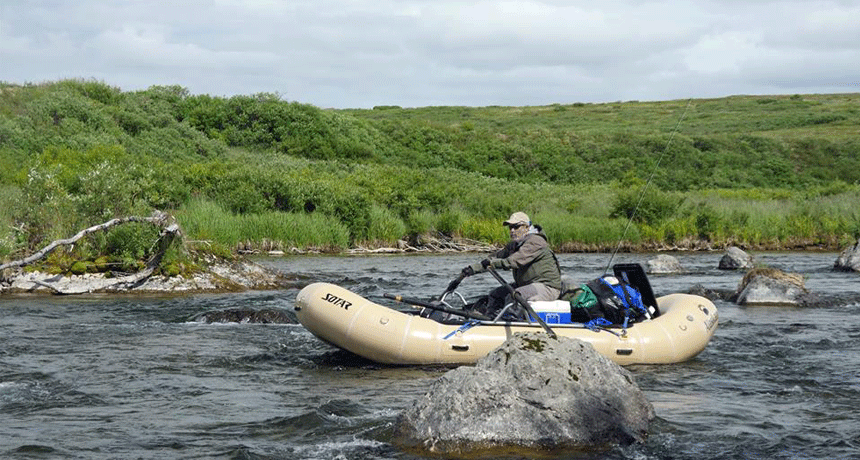
If you’re staying on the southcentral Alaska road system, then get a fishing guide for the Kenai River or one of the other rivers on the Kenai Peninsula. Not only will a guide have a boat, but he/she will offer local knowledge and get you access to some of the best fishing in the world. Also, consider hiking a little: most people don’t and you’d be surprised by the solitude that can be found with a few hundred yards of walking.
A remote DIY float trip is my personal favorite type of fishing trip. Alaska offers some amazing remote float trips where you’ll have the opportunity to catch a fish of-a-lifetime and see lots of wildlife. These trips can be very affordable; especially when compared with the cost of staying at a lodge. In fact, this site has some useful articles to get you started on your gear list and to help you decide where to go. However, planning these trips can be a challenge, particularly for anglers traveling a long distance to Alaska with lots of gear.
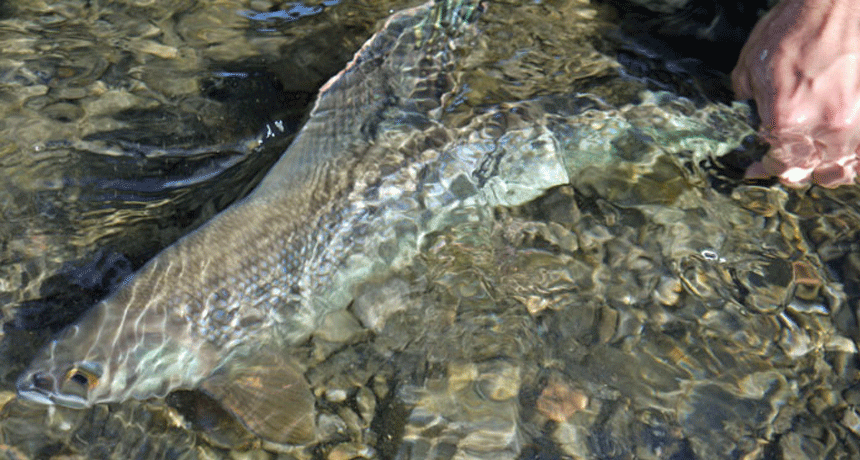
A local outfitter is your best friend when planning a DIY trip. A good outfitter can get you hooked up with the right gear, inform you about river conditions, and arrange safe transport to and from your site.

Talk with local fly shops in the region you're visiting. I am not talking about the big box stores or a fly shop in the Lower 48. The “ma-and-pop” stores in Alaska have the best fish gossip and are likely your most important source of information for a successful trip. Besides, these small stores are generally cool places to hang out and have a vested interest in your success.
In closing, I hope these few tips reduce any dissonance you have or at least provide you with a few things to think about when planning a trip. Alaska is an angler’s paradise, assuming of course you go to the right place, come at the right time, and use the correct fishing techniques. Stitching these elements together is the art of trip planning! A little bit of good luck doesn’t hurt either.
